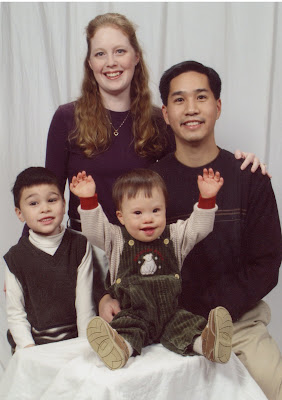We Americans don’t have much experience with the concept of royalty. Maybe the closest we get is if we watch movies like The Queen or The Princess Diaries. If you’ve seen The Queen, you know that one major theme of the plot is how distanced the queen and the royal family are from the British people, in contrast with Princess Diana, who was viewed as “the people’s princess.” There’s a tension between being sovereign, over the people, and being incarnational, among the people. It was a big deal at Jimmy Carter’s inauguration for him to get out of the limo and walk the streets among the people. Which wasn’t done by Bush for his second inaugural because of security reasons.
My junior year of college, our choir tour went to Washington, DC. We had a few days to visit the museums and monuments. One morning a group of us were walking down the Mall, and at one street, traffic was stopped. We stood there on the curb for a few minutes, and soon a big motorcade of black limousines came through, passing by right in front of us. We found out later that it was President Clinton on his way to the opening of the new Holocaust Museum.
A few years later, I was in DC again for a grad school summer journalism trip, visiting various media organizations in DC. One of my classmates happened to be friends with a Secret Service agent, and the agent was able to get us in for a behind-the-scenes tour of the White House. We got to see stuff that wasn’t on the public tour. We stood at the doorway of the Oval Office and looked in. Saw the Cabinet Room. Went into the private presidential movie theatre, where the President and his family watch new movies with Hollywood actors and directors. I sat down in one of the front row seats, very comfy, and the Secret Service agent told us that Tom Hanks had just been there to watch a screening of one of his movies with the President.
We got to see the White House Press Room. It’s not a very big room. At the time it had just six rows of seats, eight chairs per row. The room was recently remodeled last year, but at the time of my visit, each chair had a little brass label on it: Associated Press, New York Times, Washington Post. I have a picture of me standing at the podium. We actually sat in on an actual press briefing, with White House Chief of Staff Leon Panetta and Secretary of the Department of Health and Human Services Donna Shalala. I was standing two feet away from George Stephanopoulos. Could have reached out and touched him. And would have been carted off by security.
That’s the closest I’ve ever gotten to presidential power, to a head of state. And it occurs to me that maybe the best modern day analogy to Jesus as king is Nelson Mandela as president of South Africa. Here was a man who was imprisoned for decades, raised from the depths to bring reconciliation and healing to his land. Mandela might be the closest we have to a picture of a servant king.
The picture we have of Jesus as Christ the King is the crucified God, the king on a cross. If we look at the Colossians passage, we see that this crucified king is now the exalted Lord of all creation. He’s the image of the invisible God. He shows us what we cannot see. What is God? He looks like this, like Jesus. That’s what God looks like. Don’t imagine that God is some abstract philosophical concept and try to fit Jesus into that mold. Flip it around. Look at Jesus – his compassion, his love, his power, his mercy, his sacrifice – that’s what God is like. Christ the King is both sovereign and incarnational. Above us and yet among us.
Subscribe to:
Post Comments (Atom)

No comments:
Post a Comment